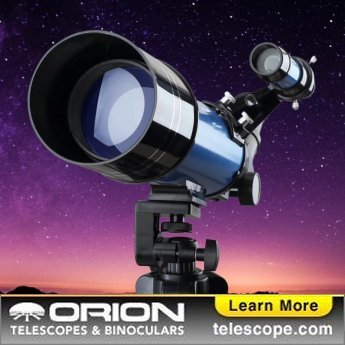Grus, the Crane (Gru)
(gruss)
The Southern constellation of Grus, the Crane, is best viewed in Fall during the month of October.
Grus is the 45th largest constellation. It's brightest star is Alnair at magnitude 1.73. The boundary of the Grus constellation contains 6 stars that host known exoplanets.
- Pronunciation:
- gruss
- Meaning:
- Crane
- Genitive:
- Gruis
- Abbreviation:
- Gru
- Constellation Family:
- Bayer
- Hemisphere:
- Southern
- Quadrant:
- SQ4
- Visibility:
- 34° N - 90° S
- Best viewing month*:
- October
- Area:
- 366 sq. degrees
- Size:
- 45th largest
- Right Ascension (avg):
- 22h 27m
- Declination (avg):
- -45°
- Brightest star:
- Alnair (1.73)
- Stars with planets:
- 6
- Messier objects:
- |
- Caldwell objects:
- |
Brightest Stars in Grus
The 10 brightest stars in the constellation Grus by magnitude.
- Star
- Magnitude
- Spectral class
- Alpha Gruis (α Gru)
- 1.73
- B7IV
- Beta Gruis (β Gru)
- 2.07
- M5III
- Gamma Gruis (γ Gru)
- 3
- B8III
- Epsilon Gruis (ε Gru)
- 3.49
- A3V
- Iota Gruis (ι Gru)
- 3.88
- K0III SB
- Delta Gruis (δ1 Gru)
- 3.97
- G6/G8III
- Zeta Gruis (ζ Gru)
- 4.11
- G8III
- Delta Gruis (δ2 Gru)
- 4.12
- M4.5IIIa
- Theta Gruis (θ Gru)
- 4.28
- F5me
- Lambda Gruis (λ Gru)
- 4.47
- M0III
Nebulae in Grus
Notable and easy-to-find nebulae in the constellation Grus . Also see all nebulae.
Galaxies in Grus
The most notable galaxies in the constellation Grus. Also see all galaxies.
Milky Way Satellites in Grus
Dwarf satellite galaxies that orbit the Milky Way Galaxy located in the constellation Grus. Also see all Milky Way satellite galaxies.
- Galaxy name
- Alt name
- Magnitude
- Grus II
- Grus I
The Celestial Crane
Grus, Latin for the "crane," is a constellation in the Southern Hemisphere that represents the bird of the same name. The constellation, relatively modern, is one of the 88 official constellations recognized by the International Astronomical Union (IAU). It was first described in the late sixteenth century by Dutch navigators and later included in Johann Bayer's star atlas Uranometria in 1603. Its brightest stars form a pattern that resembles a long-necked bird in flight.
Historical Overview
Grus, unlike many other constellations, does not have roots in ancient Mediterranean cultures. Instead, it was one of 12 constellations introduced by Dutch navigators Pieter Dirkszoon Keyser and Frederick de Houtman during their voyages to the East Indies in the late sixteenth century. Later, it was included in Johann Bayer's influential celestial atlas, solidifying its place among the recognized constellations. It is one of several constellations that represent birds, alongside others such as Cygnus (the swan), Aquila (the eagle), and Pavo (the peacock).
Location and Main Features
Grus is located in the fourth quadrant of the Southern Hemisphere (SQ4) and can be seen at latitudes between +34? and -90?. It's bordered by several constellations, including Piscis Austrinus, Microscopium, Indus, Tucana, Phoenix, Sculptor, and Cetus. Grus spans over 366 square degrees, making it the 45th largest constellation in terms of size.
Major Stars
The brightest star in Grus is Alpha Gruis, or Alnair, which means "the bright one" in Arabic. It is a blue-white main-sequence star that's approximately 101 light-years away from us. It shines at magnitude 1.74, making it the 30th brightest star in the sky.
Beta Gruis, the second-brightest star, is a red giant star situated about 170 light-years away. With an apparent magnitude of 2.1, it's slightly dimmer than Alnair. Gamma Gruis, a blue-white giant, is notable for its relatively high temperature and shines with an apparent magnitude of 3.0.
Deep Sky Objects
Grus hosts a number of fascinating deep-sky objects. These include the Grus Quartet, a group of four interacting spiral galaxies, and the planetary nebula IC 5148, often referred to as the Spare Tyre Nebula due to its shape. The Grus-Quartet is located about 60 million light-years away and is a stunning sight in larger telescopes. IC 5148 is approximately 3,000 light-years distant and is expanding at a rate of 50 km/sec, making it one of the fastest expanding planetary nebulae known.
Observation
For observers in the Southern Hemisphere, Grus is visible in its entirety between the months of July and November. From northern latitudes, the constellation appears low on the southern horizon during the same period. Observers should look for Grus following the constellation of Piscis Austrinus, the southern fish, as they both rise in the east after dusk.
Grus in Modern Astronomy
In the present era, Grus serves as an important navigation aid for astronomers and is a point of interest for amateur stargazers due to its prominent stars and intriguing deep-sky objects. Moreover, the constellation's southerly position makes it an ideal window for viewing the galaxies, nebulae, and star clusters that abound in this region of the sky.
* Constellation shown for northen hemisphere skies. For the southern hemisphere, constellations appear rotated 180 degrees (upside-down and left-right reversed) from what is shown. Remember that seasons are reversed too - summer in northern latitudes is winter in southern latitudes.
** Circumpolar constellations are visible year-round in the hemisphere listed (and not at all in the opposite hemisphere).





